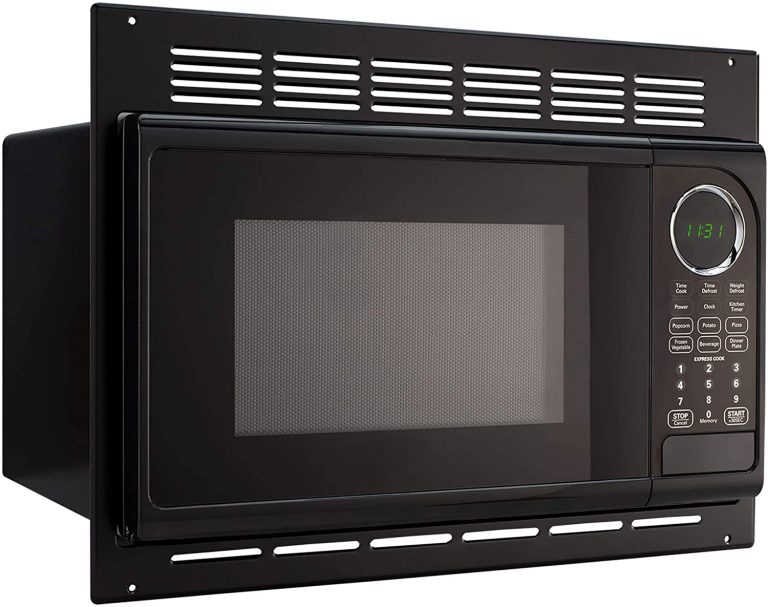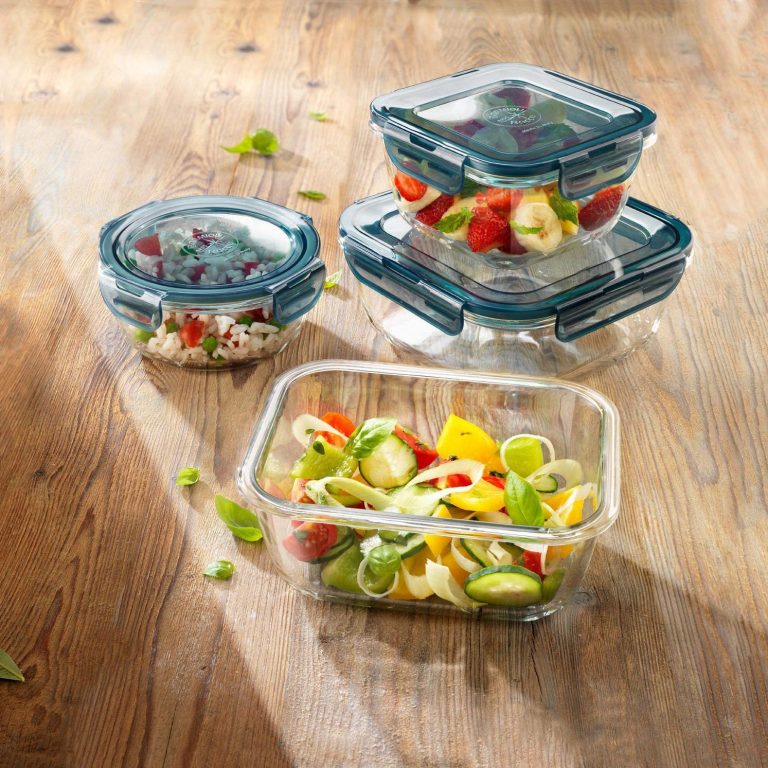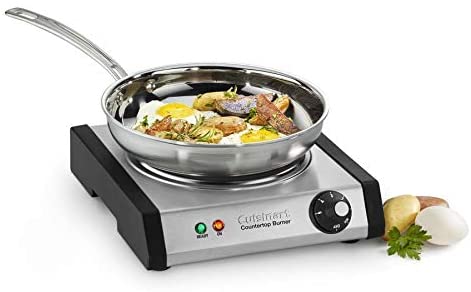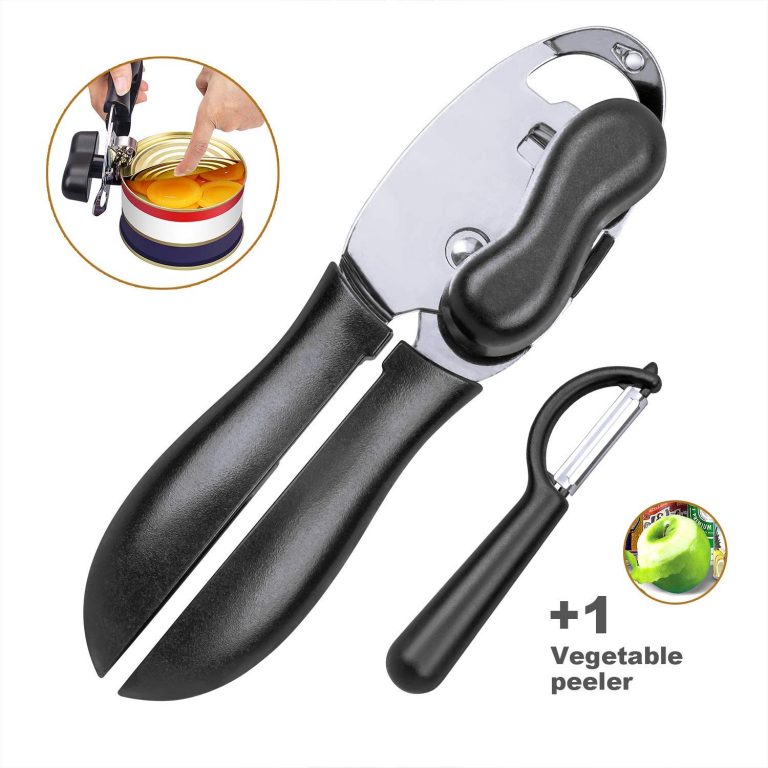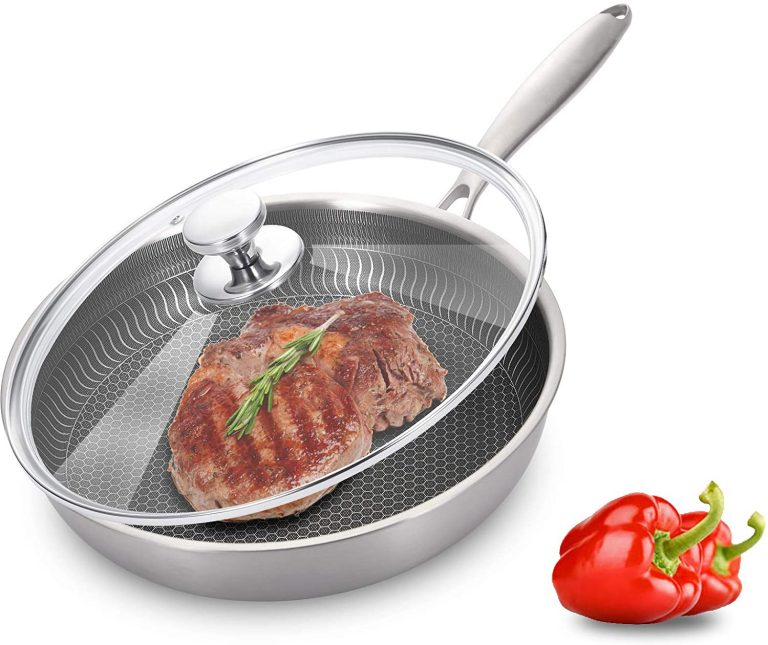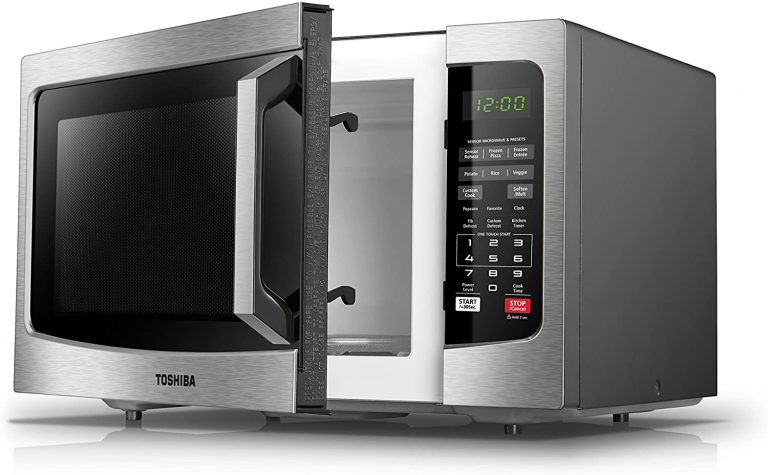How Do I Know If My Pan Is Oven Safe?
Many of us spend a lot of time in the kitchen and find ourselves cooking over our gas, electric, or induction cooktops.
The one thing we all have in common is that when it comes to preparing food, we want it to be absolutely perfect and make us proud.
To do this, you need to make sure your pan is oven-safe. And with so many options on the market, it can be confusing which ones are the best for cooking.
Table of Contents
How to Decide if a Pan is Oven-Safe
The best way to ensure that a pan is oven-safe is to check the manufacturer’s instructions. However, below are some general points to consider:
- The metal should be thick and heavy enough that it won’t bend or distort when in the oven.
- The pan should have a nonstick coating so that it doesn’t stick and cause damage.
- The shape of the pan should also be appropriate for cooking in the oven. If a standard baking pan feels bulky, it won’t work for the oven and this would cause uneven cooking or even overheating of your food
- The rim should be flat so that you can rest pans as well as strain out excess items from boiling water for example if you’re cooking pasta.
Skillets made from iron are great for cooking because it is extremely sturdy and last a long time without wearing or showing any kind of damage.
The only downside with them would be that you cannot use metal utensils on silicone ones as the two materials do not interact well at all.
Some people even add oil to these types of pans after using, in order to prevent rusting. To cut down on some more expenses associated with buying a skillet, you could also think about investing in a wok as it can do almost all of the things that regular pans are able to.
Material like steel makes for convection when cooking which helps in achieving an even and quick heat distribution so that very little energy is wasted on working with cold water just to deglaze anything disgusting or crumbly off your pan’s surface because stabbing the food directly would have failed most likely.
Skillets that are made out of cast iron for example last a very long time when it comes to their quality.
They can even go up to about ten years if you keep them in good condition so that most people believe they will not be used much and may just wait until something more suitable presents itself from under the kitchen cabinet.
In fact, some skillets come with special cookware handles that when you grasp and twist to one side, the pan will tilt in that direction. It is easy to get into all kinds of foods including baked goods, flat items like fish fillets as well as meat and vegetables without having to just constantly scrape every yolk or bone off your food.
See also: Best Pots and Pans for Electric Stove
Is the Coating on the Pan Heat Resistant?
Yes, the coating is heat resistant. The glassware that is made with abs is heat resistant.
The thinner the chrome-cast iron and cast aluminum pieces you’re picking, the more fragile they may be–and glass can crack or shatter if it’s hit hard enough or simply placed in a rough environment (like your oven).
So then I like to go for a high-quality stainless steel cookware set when baking because this is one of my priorities in the first place so I prefer stainless steel that is typically used in commercial kitchens and restaurant units.
Also, it is something more durable when its body gets worn out because these are typically not ‘polished’ so they have a textured outer coating (which I like).
Which Pans Can You Put in the Oven?
There are a few pans you can put in the oven.
Ones that are safe to put in the oven include aluminum foil pans, baking dishes, cake tins, and pie crusts. Along with glass and quartz, stainless steel is also a very heat-resistant material.
Unlike their glass counterparts, however, only certain types of stainless steel can be used for dishes that may go into your dishwasher or wet environment (like boiling water).
If you want something to use as delicate plate ware then I recommend going without it because otherwise, they’ll probably wear out sooner soon if fused together under high temperatures and intense heat that I think of.
With stainless steel, you have the chance to utilize a wonderful and flexible material for many uses but some things may consider that it isn’t as durable by some people who are just learning about this kind of kitchenware because they figure out every time these would get lost, dented or broken easily due to its weaknesses in durability (which also referred as cheapness).
For example like cutlery set made from relatively cheap stainless steel won’t be that long-lasting compared to its non-stainless counterparts (which is in my opinion).
You can put Pyrex or Clad Glasses and Precious Stones/Metals into the Oven.
These are both safe materials but it’s not recommended because first of all if something is burnt then at least I can just scratch them off.
Second, because these aren’t ‘polished’ nor any kind of epoxy or anti-stick coatings are used so there’s no reason to burn some things.
How Do I Know If My Pan Is Oven Safe or Not?
When you genuine size (or professionally stainlessized or silverized) a pan, some chemicals would be added to maintain the cooking surface.
As with any coated surfaces in your home, baking soda can remove it but then we need cleaning agents that are gentle on coatings and other finishes, etc.
If the word “STAINLESS” is used near the brand name of these pans then I think that one could put them into an oven with no worries.
I have a few cast-iron skillets and pans but the ones that are not labeled as “cast” don’t really contain any kind of non-stick surface coating so I would be more cautious about using these in an oven because you’ll notice little marks, scratches, or browning whenever they’re exposed to high temperatures relatively quickly.
Another concern when it comes to baking with stainless steel is that it isn’t ideal for cooking meats that require searing and crisping both because of its relatively low levels of satin-enamel (which is a very hard surface layer) and due to the general roughness factor.
Bottom Line
So you have your new pan. Now what? You need to know how to care for it and keep it in good condition so that it will last a long time.

Foodie and a passionate cook, I am here to share all of what I know about cooking, kitchen, and food prepping.
Follow me for delicious and healthy recipes.

